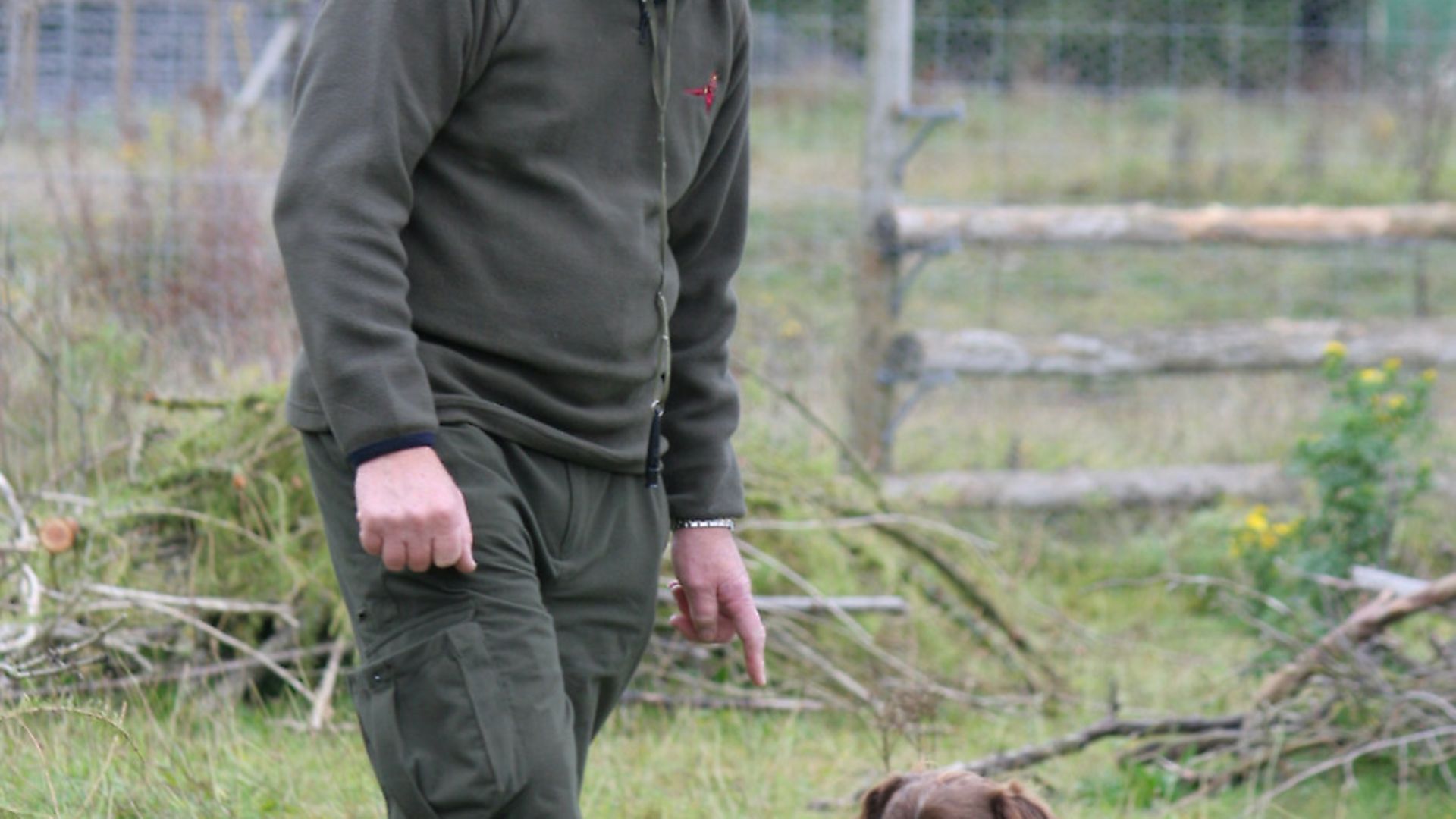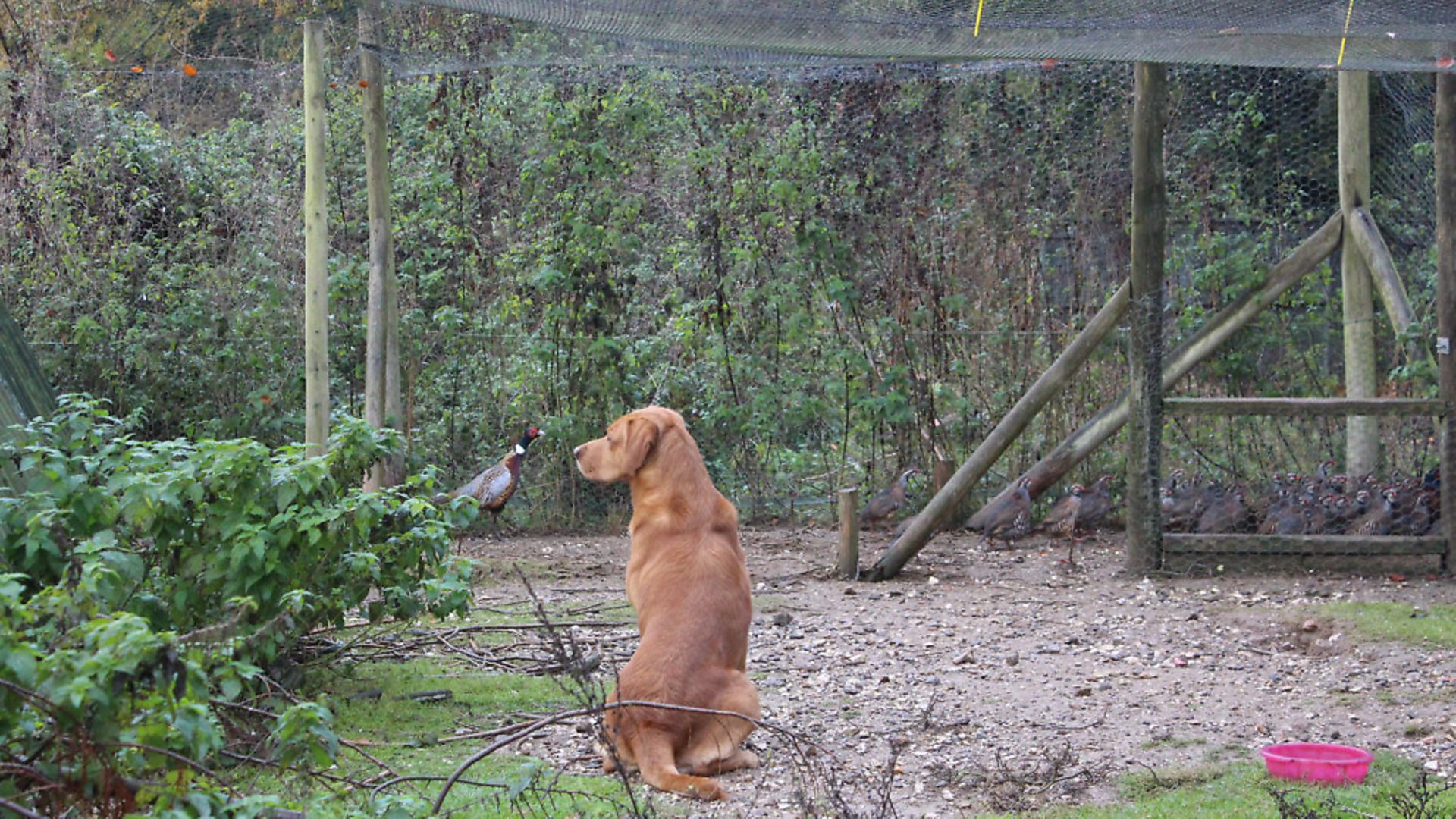Shoot days can be overwhelmingly exciting for gundogs - Howard tells us how to ensure you are prepared, and offers training advice if it does go wrong!
 credit: Archant
credit: Archant
At this point in the season you’ll have had plenty of opportunities to work your dog in the shooting field. With a bit of luck all of the training you’ve done is really paying off. Good or bad it’s essential that you don’t take your foot off the gas. Most enthusiastic dogs are not trained for life. The very nature of the way we work our shooting dogs in the UK means that we are often at cross purposes with what the dog as a hunter species would want to do in order to maximise his ability to catch prey.
For example, we insist that our dogs hunt specific areas when often the dog is clearly aware that there is more game somewhere else. “What is wrong with you boss, why are we messing about in these nasty nettles? There’s loads of prey in that bird pen over there,” clearly crosses the dog’s mind on most outings.
This all means that we will need to insist that the obedient partnership that we have worked so hard to establish stays in place. In this article we’ll take a look at prevention and what we might do if things start to go a bit wonky.
 credit: Archant
credit: Archant
FAILURE TO PREPARE
You’ve heard me say it in other articles but I make no apologies for repeating myself – prevention is better than cure. So be vigilant and constantly take a view before sending your dog for a retrieve or casting him off to hunt. Try and do a risk assessment; sometimes the risks will need to be assessed in a split second, while others can be mulled over for longer.
Be aware of the limitations of your dog and sometimes your own experience; if in doubt keep him out. I don’t want to sound like a killjoy but things can go wrong very quickly, especially on a shoot day.
Probably top of the play-safe list is to keep your dog close. Hunting, picking up and retrieving can be very effective when your dog is close to you. Loose birds that flush from the cover you send your dog into can cause real problems. If you are up nice and close you can use your presence to ensure that the dog sits to the flush; you will probably need to reinforce the sit with the whistle and possibly further pressure with your voice. Keep him in the sit and wait until the dog focuses on you, now he’s ready to take instruction. At this point you can redirect or encourage the dog to continue hunting for the original bird.
If we get this right, this will enhance what the dog chooses to do next time this happens. The opposite will be encouraged if we don’t take a very firm and rapid grip of the situation.
 credit: Archant
credit: Archant
WHAT TO DO WHEN IT GOES WRONG
In the event that the dog doesn’t stop and sit you will need to be on him really quickly. Simultaneously vocalise your disapproval and move towards him rapidly – your noise, body language and immediate presence should bring him to a stop. It’s massively important to understand that the correction has now been done, what must now follow is instruction.
Place the lead on the dog and take him back to exactly where he moved from. Now reissue the stop whistle and get him to sit. Slip the lead off and let him think about it for a minute. While he’s thinking about his mistake you can be deciding how to proceed. Maybe carry on or perhaps move him to somewhere else?
KEEPING HIM CLOSE
When hunting your dog the ‘keep him close’ rule still needs to apply. You need to assess each and every piece of cover that he hits. The moment you loose sight of the dog the risk of problems multiply. Of course, we need to send him into cover but you need to ensure he’s reporting back to you; just a few seconds out of contact and he can be away. You need to use your hearing; watch for the movement of cover and game to stay in touch with him. The moment you hear game flush, hit him with the stop whistle. If your training has been thorough he should sit by himself but when a dog is sat in under cover with game running around at his feet it won’t take long before he starts to chase. If he has a flush then bring him out and back to you. Hunt him around your feet and ensure he’s under control before you pop him back to the exciting stuff.
With a young, powerful dog it’s important not to let him get over excited. If necessary, bring him back and keep him with you to allow time for him to calm down a bit. If he sees too much in quick succession you risk him just boiling over and losing the plot.
CEMENT THE BASICS
Basic controls are everything when working a gundog and if recall, turn/stop whistles and the ability to correct your dog with your voice when things go wrong are not in place then most of my advice in this article will not help much. There are dogs out there that seem to train themselves and by and large hunt and retrieve without getting themselves into trouble. The really highly driven dogs that we run at present are a delight to work with – bright, enthusiastic and relatively straightforward to train. It’s their drive and energy to catch game that makes them all of these things. This drive, however, must be controlled and directed.
We are aiming to build a partnership with your hunting dog. We need to allow him to use all of those incredible assets that he’s born with to find game. However, and in my opinion it’s a huge however, a willingness to listen and be obedient to the whistle is essential if we are to work a dog on ground with a plentiful supply of game.
There are those that would advise that that you mustn’t interfere with the dog’s natural instinct. ‘Let him hunt, he’ll soon learn not to chase, if he doesn’t catch anything there’s no reward and he’ll soon give up’ is advice I hear being given. If it was that simple everyone would have lovely shooting dogs… and I’d need to get a new job!
In conclusion, there’s no substitute for carefully planned, layered training. Plan to make the transition from dummies to game using controlled environments – a rabbit pen, shoot-over days or, if you’re really lucky, chat up your keeper and use quiet areas on the shoot. Try to ensure that you have given your dog as much experience on game as possible before taking him on a formal shoot day and then ensure you keep him close on those first few outings and you will be able to better manage all of the challenges that a day in the field will present.